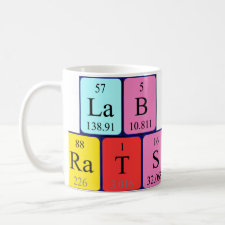
Authors: Jiang DL, Sun XL, Zhang YZ
Article Title: Preparation and application of acrylamide molecularly imprinted composite solid-phase extraction materials.
Publication date: 2012
Journal: Analytical Methods
Volume: 4
Issue: (11)
Page numbers: 3760-3766.
DOI: 10.1039/C2AY25814E
Abstract: A novel acrylamide (AA) molecularly imprinted material based on silica microparticles was synthesized successfully by a surface polymerization method using propionamide (PAM) as a template molecule, methacrylic acid (MAA) as a functional monomer, and ethylene glycol dimethacrylate (EGDMA) as a cross-linker. The molecularly imprinted polymers (MIP) on the surfaces of silica microparticles were characterized using infrared spectroscopy and scanning electron microscopy, and the results suggested that the MIP was successfully grafted onto the silica surface. The amount of AA adsorbed on the MIP was measured using high-performance liquid chromatography (HPLC) and equilibrium binding experiments. The results of static adsorption equilibrium experiments and Scatchard analysis showed that compared with non-imprinted polymers, the imprinted polymer had a significantly higher adsorption capacity for AA. Scatchard analysis revealed that two classes of binding sites were formed in the MIP with dissociation constants of 0.182 and 0.099 μmol mL-1, and the maximum apparent binding capacities were 16.18 and 54.18 μmol g-1. The new adsorbent was successfully used in solid-phase extraction (SPE) to selectively enrich and determine AA in fried food samples. The experimental results indicated that the MIP-SPE column gave recoveries higher than 93% with a relative standard deviation (RSD) of less than 2.24%, much better than those obtained using a commercial C18-SPE column, which gave a recovery of less than 24% with RSD < 2.07%. The developed MIP-SPE/HPLC protocol improved the selectivity and eliminated the effects of template leakage on quantitative analysis, and could be used for the determination of AA in complex food samples
Template and target information: acrylamide, AA



Join the Society for Molecular Imprinting

New items RSS feed
Sign-up for e-mail updates:
Choose between receiving an occasional newsletter or more frequent e-mail alerts.
Click here to go to the sign-up page.
Is your name elemental or peptidic? Enter your name and find out by clicking either of the buttons below!
Other products you may like:
 MIPdatabase
MIPdatabase









